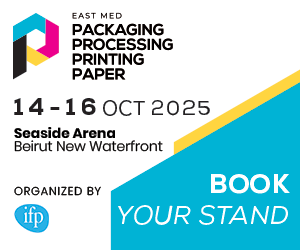The global hybrid printing technologies market is projected to grow from USD 5.3 billion in 2024 to approximately USD 14.7 billion by 2033, achieving a compound annual growth rate (CAGR) of 12.1% during this period. This innovative printing method combines digital and traditional printing techniques, allowing for greater flexibility and efficiency in production. By leveraging the strengths of both technologies, hybrid printing enables high-speed production without sacrificing print quality.
The increased demand for rapid turnaround times and personalized printing solutions is driving this market’s growth. Industries such as packaging, textiles, and commercial printing are adopting hybrid printing to address their diverse needs. This technology caters to a wide array of applications, ranging from small-scale, on-demand jobs to large industrial projects, positioning it as a versatile option in modern printing.
Key factors contributing to the growth of hybrid printing technologies include the need for cost efficiency and reduced waste. Businesses seek solutions that combine the high speeds of traditional methods with the customization offered by digital printing. Additionally, the push for environmentally friendly printing practices is steering the market toward technologies that decrease waste and enhance energy efficiency.
The surge in demand for customized and on-demand printing further fuels interest in hybrid technologies. Companies are using these systems to deliver unique products tailored to individual preferences, such as personalized marketing materials and packaging. The trend toward short-run print jobs, which hybrid printing can accommodate with lower setup costs and waste, also supports market expansion.
Promising opportunities lie in sectors like packaging, where there is a demand for personalized solutions. The production of smart labels and functional printing is gaining traction in industries such as electronics and healthcare, where hybrid methods allow for the integration of electronic features into printed materials.
Technological advancements focus on improving the integration and effectiveness of combined printing techniques. Key developments include new software tools that better manage digital and conventional processes, innovations in inkjet technology for higher-quality prints at quicker speeds, and improved compatibility with various materials.
Key Insights:
- The hardware segment dominated the market in 2023 with a 54.3% share, reflecting increased investment in advanced printing machinery.
- The paper and cardboard segment held a significant 40.5% share, driven by eco-friendly material usage.
- The packaging segment captured 42.1% of the market, fueled by a growing demand for customized designs and attractive packaging.
- Personalization is critical, with 91% of consumers preferring brands that offer tailored recommendations, boosting hybrid printing demand.
- The sustained growth of 3D printing revenues highlights the expanding influence of hybrid methods on traditional manufacturing.
Impact of AI on Hybrid Printing:
Artificial Intelligence (AI) is improving hybrid printing capabilities significantly. It enhances workflow efficiency, print quality, waste reduction, and predictive maintenance. AI streamlines production processes, optimizes material usage, and allows for highly personalized marketing strategies, resulting in better customer engagement and satisfaction.
Market Components:
- By Component: Hardware, Software, Services
- By Substrate: Paper and Cardboard, Glass and Metal, Textile, Plastics, Other
- By Application: Packaging, Publishing, Textiles, Advertising
Growth Catalysts:
The hybrid printing market is experiencing growth due to heightened demand for customized solutions, particularly in the fashion and apparel sectors. Furthermore, e-commerce packaging is emerging as a significant opportunity, especially as sustainability drives the need for innovative, eco-friendly packaging options.
Conclusion:
With its ability to meet diverse printing needs through customized solutions, hybrid printing technologies are poised for continued growth. The adoption of these technologies not only enhances efficiency but also meets the evolving preferences of consumers, giving businesses a competitive edge in the market.








































































